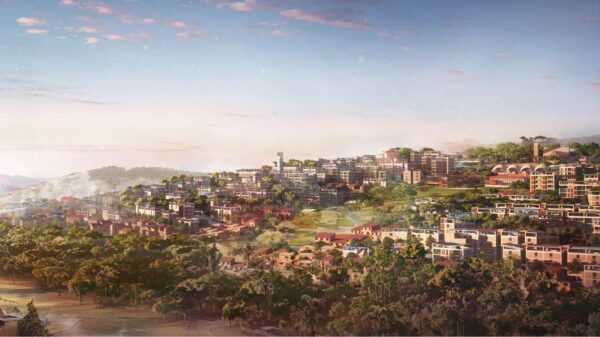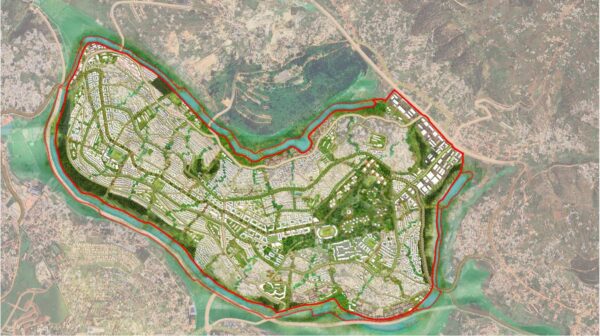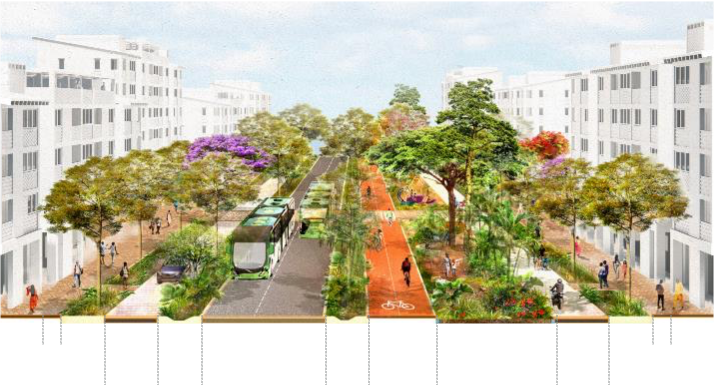Recently, the City of Kigali released the Green City Kigali Concept Master Plan for Kinyinya Hill in Gasabo District, following an extensive review and endorsement process.
“This milestone marks a pivotal step towards implementing a groundbreaking initiative that will drive Kigali’s sustainable, affordable, green, and inclusive urban growth,” said Green City Kigali in a press release.
The Green City Kigali Master Plan is built around four key pillars: affordable and socially equitable development, climate change adaptation and mitigation, resource efficiency, and culturally sensitive urban development.
It is based on the existing Kigali Master Plan 2050 and outlines the rationale for the creation of a green city.
“The Green City Kigali Master Plan has been approved, marking a significant milestone on our journey to advance sustainable and inclusive urban living in our city of Kigali. Residents can now access it, learn about the implications on their plots, and apply for construction permits,” said Samuel Dusengiyumva, Mayor of the City of Kigali during the launch of the master plan.
“The Green City Kigali is one of the Rwanda Green Fund’s flagship projects, and we are pleased to see it progress to this stage. It is unique because it tackles environmental and urban challenges while also focusing on community well-being, cultural integration, and affordability. This demonstrates the country’s commitment to sustainability and a green future for Rwandans,” said Teddy Mugabo, Chief Executive Officer of the Rwanda Green Fund.
Here are 5 things to know about this groundbreaking development in environment conservation:
1. The Green City Kigali in Kinyinya will cover 600 hectares.
The 600-hectare Green City Kigali Master Plan for Kinyinya will cover 6 villages of Rusenyi, Ngaruyinka, Birembo, Taba, Binunga, and Gasharu across the Murama and Gasharu cells in Kinyinya Sector. A first stage project on a 16-hectare site will be implemented by the Green City Kigali Company.
2. 40% of the housing will be affordable, making Kinyinya more inclusive.
Ensuring that 40% of the housing in Kinyinya is affordable would significantly enhance community inclusivity and improve access to housing for various income levels.
3. 50,000 jobs are expected to be created.
These jobs will be created throughout various phases of the project, from construction to the ongoing operation and maintenance of the green infrastructure. The job opportunities will likely span multiple sectors, including construction, renewable energy, environmental management, urban planning, and more, contributing to economic growth of residents and beyond.
4. Nature-based infrastructure will be implemented.
The project will implement systems to collect and store rainwater, which can be used for various purposes such as irrigation, reducing the demand on the city’s water supply. This not only conserves water but also helps manage stormwater runoff, reducing the risk of flooding and erosion.
The development will also prioritize renewable energy sources, such as solar power, to meet the energy needs of the community. Buildings within the Green City will be equipped with solar panels and other energy-efficient technologies, reducing reliance on non-renewable energy and minimizing the overall carbon footprint of the development.
5. Public facilities.
The area will include essential infrastructure such as roads, blue and green networks, business centers, schools, hospitals, and other vital facilities that will improve the lives of the Kinyinya community without requiring relocation. Construction developments will be required to comply with the regulations of the master plan to achieve a sustainable and climate-resilient city.
The Green City Kigali Master Plan was made possible thanks to the Rwandan-German bilateral cooperation through which the project was funded by KfW Development Bank. It is also a result of efforts of key technical and advisory partners including Feilden Clegg Bradley Studios (FCBS), Rapid Urbanism, Grant Associates, Steyn Reddy Associates (SRA), and Environmental.


